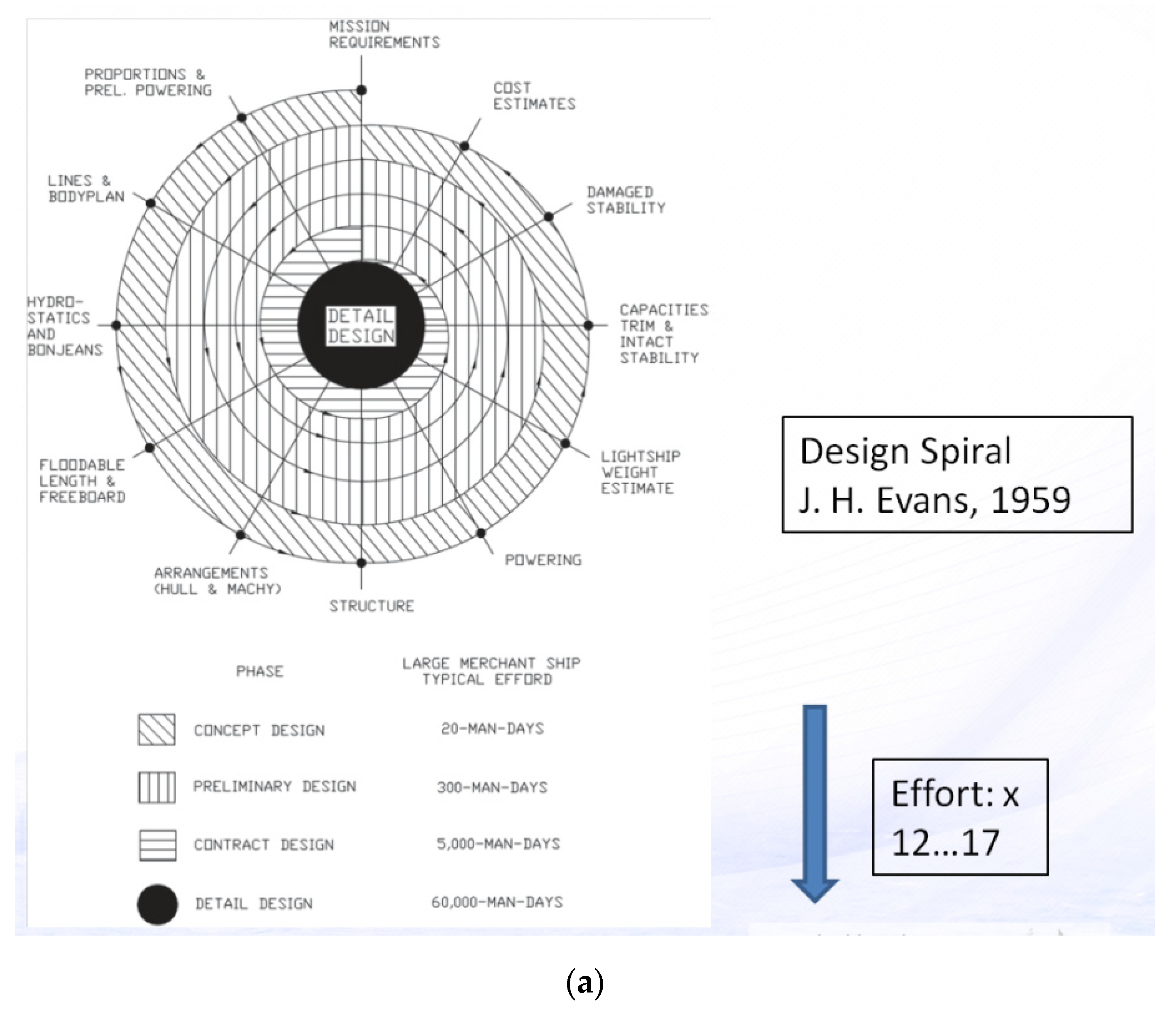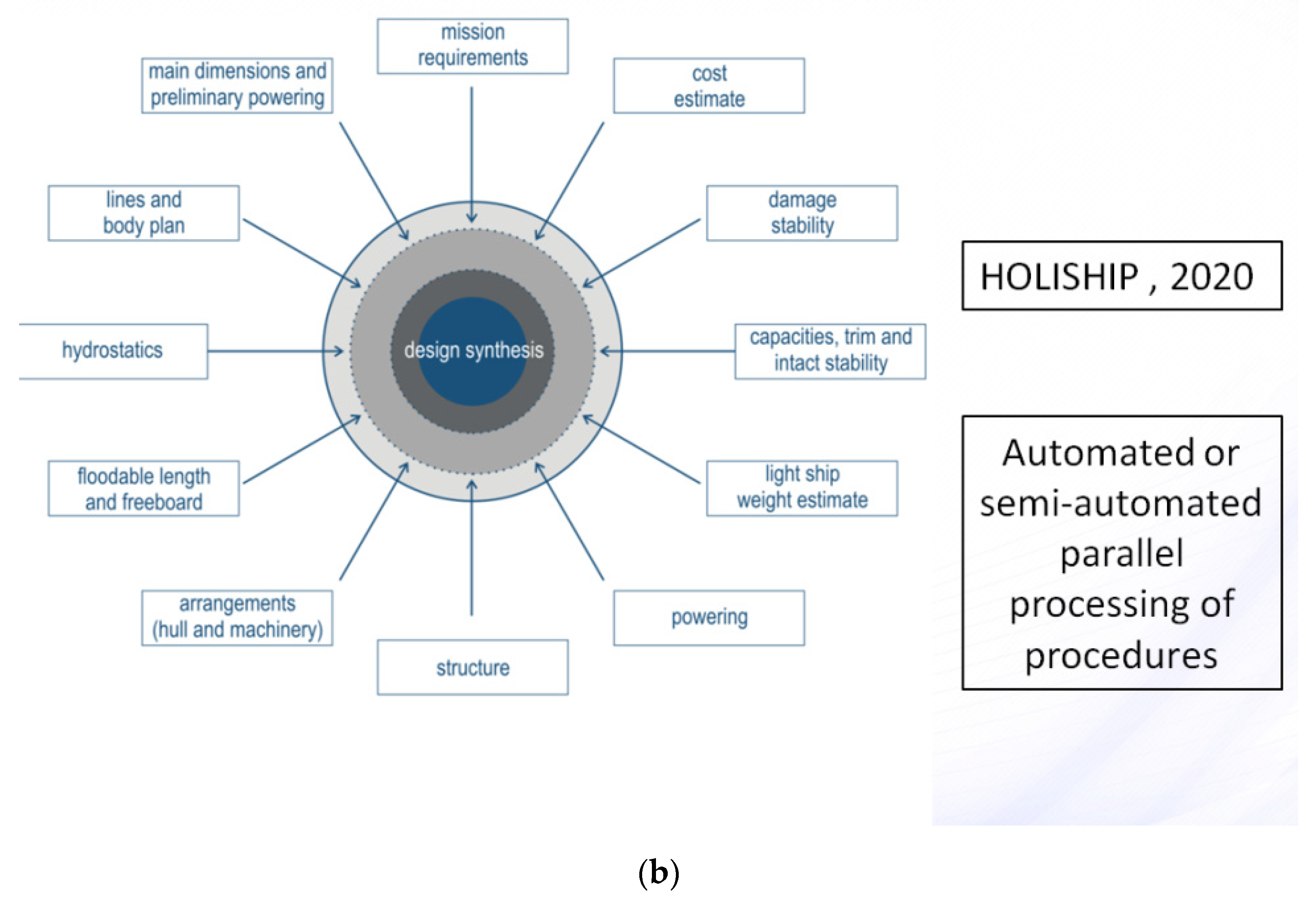Holistic Approach to Ship Design
Abstract
:1. Introduction
2. HOLISHIP Design Approach
- Hull form optimization of high-speed mono- and twin hulls for least resistance, wave wash and best seakeeping (AEGEAN QUEEN SWATH, EU VRSHIP-ROPAX2000, EU FLOWMART, EU TrAM).
- Optimization of the compartmentation of RoPax and cruise vessels for increased damage stability and survivability, minimum potential loss of lives (PLL) (EU SAFER-EURORO, EU ROROPROB, EU NEREUS, EU GOALDS, EMSA).
- Optimization of arrangements of containerships for the maximum number of deck-containers, least overstowage and minimum ballast (GL-CONTIOPT).
- Optimization of naval ships for increased survivability in case of damage in seaways and least structural weight (NAVAL OPT).
- Optimization of an LNG floating terminal (FSRU) for reduced motions and wave attenuation on terminal’s lee side (EU GIFT).
- Logistics-based optimization of ship design (EU LOGBASED).
- Risk-based design optimization of tankers for increased cargo capacity, least environmental impact, minimum ballast (EU SAFEDOR, GL-BEST).
- the CAESES® platform of Friendship Systems (https://www.friendshipsystems.com/products/caeses/, accessed on 6 November 2022),
- the NAPA® platform of NAPA Oy (https://www.napa.fi, accessed on 6 November 2022)
- the RCE®/CPACS® platform of DLR (Deutsche Luft- und Raumfahrt, https://www.dlr.de/sc/desktopdefault.aspx/tabid-5625/9170_read-17513/, accessed on 6 November 2022)
- the CADMATIC® platform of Elomatic (https://www.cadmatic.com/en/, accessed on 6 November 2022)
- the SAR® platform of Naval Group [6].
- CPACS®: Common Parametric Aircraft Configuration Schema of DLR
- HOLISPEC®: Marine Version of CPACS developed in HOLISHIP
- GES®: the initial design software tool of TNO
- CFD ReFresco and other maneuvering simulation tools of MARIN
- Rudder design tools of Damen MC
3. Ship Design Optimization
- Parametric modeling and robust variation of geometry in order to run design studies (variable geometry);
- Conversion and preparation of data for simulations to provide geometry and information to and between various tools and codes (preprocessing);
- Flexible and easy coupling of any external tools and codes, using task-specific input and output files as templates (software connection);
- Data extraction and aggregation from tools and codes (postprocessing);
- Variant generation by means of design-of-experiments (DoE) (exploration) and optimization strategies (exploitation) along with variant management and design assessment.
4. Conventional vs. HOLISHIP Design Approach: What Is the Difference?!
5. Overview of Application Cases of HOLISHIP
- The optimization of the design and operation of an Offshore Support Vessel (OSV), coordinated by Kongsberg Maritime;
- Light weight design issues of cruise vessels, coordinated by Meyer Werft;
- The design for maintainability of the engine system of a research vessel, coordinated by Fincantieri Shipyard;
- The concept and contract design of a multi-purpose ocean vessel, coordinated by the Naval Group;
- The virtual vessel mockup for the simulation of the maneuvering of a cargo ship, coordinated by MARIN;
- The hydrodynamic optimization of a containership and a bulk carrier, as well as the presentation of a weather routing system, coordinated by NTUA on behalf of DANAOS;
- The concept design of a gravity base foundation for an offshore platform operating in icy shallow waters, coordinated by Elomatic;
- The optimization of a conventional and an advanced engine/propulsion technology RoPax, coordinated by Tritec Marine;
- The design of a double ended ferry, coordinated by Elomatic.
- The design of an LNG fueled RoPax vessel for operation between Italy and Greece
- The design of a battery driven double ended ferry for operation in Finish coastal waters.
6. Summary and Concluding Remarks
- Design synthesis and integration of software tools realized via a combined bottom-up and top-down approach;
- Parametric, multi-objective design optimization enabled via CAESES® platform;
- Flexible combination of tools as needed for specific design tasks;
- Continuous growth of syntheses models with more application cases;
- Replacement of resource-intensive simulations with surrogate models;
- VR modeling via RCE platform known from German aviation industry (DLR);
- Distributed Working enabled via RCE cloud computing;
- Holistic approach to ship design proven in a series of application studies;
- ○
- Effective exploration of huge design space in short time;
- ○
- Seamless consideration of important design aspects at early stage;
- ○
- Rationally optimized designs by state-of-the-art tools;
- ○
- Consideration of human factors in ship design by virtual modeling and VR testing.
Funding
Conflicts of Interest
| 1 | Key-note paper presented at MARTECH22, the 6th International Conference on Maritime Technology and Engineering, Lisbon, Portugal, 24–26 May 2022. |
References
- Papanikolaou, A. Holistic Ship Design Optimization. J. Comput.-Aided Des. 2010, 42, 1028–1044. [Google Scholar] [CrossRef]
- HOLISHIP (2016–2020), Holistic Optimisation of Ship Design and Operation for Life Cycle. Project Funded by the European Commission, H2020-DG Research, Grant Agreement 689074. Available online: http://www.holiship.eu (accessed on 6 November 2022).
- Sullivan, B.; Shantanoo, D.; Sole, J.; Rossi, M.; Ramundo, L.; Terzi, S. Maritime 4.0—Opportunities in Digitalization and Advanced Manufacturing for Vessel Development. Procedia Manuf. 2020, 42, 246–253. [Google Scholar] [CrossRef]
- Papanikolaou, A.; Zaraphonitis, G.; Jokinen, M.; Aubert, A.; Harries, S.; Marzi, J.; Mermiris, G.; Gunawan, R. Holistic Ship Design for Green Shipping. In Proceedings of the SNAME Maritime Convention 2022, Houston, TX, USA, 26–29 September 2022. [Google Scholar]
- Papanikolaou, A.; Harries, S.; Hooijmans, P.; Marzi, J.; Le Nena, R.; Torben, S.; Yrjänäinen, A.; Boden, B. A Holistic Approach to Ship Design: Tools and Applications. J. Ship Res. 2022, 66, 25–53. [Google Scholar] [CrossRef]
- Le Néna, R.; Alan Guégan, A.; Rafine, B. Systemic Approach to Ship Design. In A Holistic Approach to Ship Design, Volume 1: Optimisation of Ship Design and Operation for Life Cycle; Papanikolaou, A., Ed.; Springer: Berlin/Heidelberg, Germany, 2019; Chapter 5; ISBN 978-3-030-02809-1. [Google Scholar]
- Zaraphonitis, G.; Plessas, T.; Kraus, A.; Gudenschwager, H.; Schellenberger, G. Parametric Optimisation in Concept and Pre-contract Ship Design Stage. In A Holistic Approach to Ship Design, Volume 1: Optimisation of Ship Design and Operation for Life Cycle; Papanikolaou, A., Ed.; Springer: Berlin/Heidelbeg, Germany, 2019; Chapter 7; ISBN 978-3-030-02809-1. [Google Scholar]
- Jokinen, M.; Broglia, R.; Gatchell, S.; Aubert, A.; Gunawan, R.; Schellenberger, G.; Harries, S.; von Zadow, H. Design of a Double Ended Ferry. In A Holistic Approach to Ship Design, Volume 2: Application Cases; Papanikolaou, A., Ed.; Springer: Berlin/Heidelberg, Germany, 2021; Chapter 12; ISBN 978-3030710903. [Google Scholar]
- Hooijmans, P.; van Hees, M.T.; Verkerk, F. Virtual Vessel Framework for Merchant Ship Manoeuvring Operation. In A Holistic Approach to Ship Design, Volume 2: Application Cases; Papanikolaou, A., Ed.; Springer: Berlin/Heidelberg, Germany, 2021; Chapter 7; ISBN 978-3030710903. [Google Scholar]
- Maggioncalda, M.; Gualeni, P.; Notaro, C.; Cau, C.; Bonazountas, M.; Stamatis, S. Life Cycle Performance Assessment (LCPA) Tools. In A Holistic Approach to Ship Design, Volume 1: Optimisation of Ship Design and Operation for Life Cycle; Papanikolaou, A., Ed.; Springer: Berlin/Heidelberg, Germany, 2019; Chapter 11; ISBN 978-3-030-02809-1. [Google Scholar]
- Evans, J.H. Basic Design Concepts; American Society of Naval Engineers: Alexandria, VA, USA, 1959. [Google Scholar]
- Nowacki, H. A Farewell to the Design Spiral, Invited Note Presented at the Mini-Symposium on Ship Design, Ship Hydrodynamics & Maritime Safety, Athens. 30 September 2016. Available online: https://www.academia.edu/42261670/A_Farewell_to_the_Design_Spiral_A_Farewell_to_the_Design_Spiral (accessed on 6 November 2022).
- Taggart, R. (Ed.) Ship Design and Construction; SNAME Publications: New York, NY, USA, 1980. [Google Scholar]
- Papanikolaou, A. Ship Design—Methodologies of Preliminary Design; 575 illus; Springer: Berlin/Heidelberg, Germany, 2014; p. 628. ISBN1 978-94-017-8751-2. ISBN2 978-94-017-8750-5. [Google Scholar]
- Nowacki, H. Five decades of Computer-Aided Ship Design. J. Comput.-Aided Des. 2010, 42, 956–969. [Google Scholar] [CrossRef]
- Harries, S.; Abt, C. CAESES—The HOLISHIP Platform for Process Integration and Design Optimization. In A Holistic Approach to Ship Design, Volume 1: Optimisation of Ship Design and Operation for Life Cycle; Papanikolaou, A., Ed.; Springer: Berlin/Heidelberg, Germany, 2019; Chapter 8; ISBN 978-3-030-02809-1. [Google Scholar]
- Nowacki, H.; Brusis, F.; Swift, P.M. Tanker Preliminary Design—An Optimization Problem with Constraints. Trans. SNAME 1970, 78, 357–390. [Google Scholar]
- Harries, S.; Abt, C. Integration of Tools for Application Case Studies. In A Holistic Approach to Ship Design, Volume 2: Application Cases; Papanikolaou, A., Ed.; Springer: Berlin/Heidelberg, Germany, 2021; Chapter 2; ISBN 978-3030710903. [Google Scholar]
- Tuzcu, C.; Dinsdale, C.; Hawkins, J.; Zaraphonitis, G.; Papadopoulos, F. RoPax Design Revisited—Evolution or Revolution? In A Holistic Approach to Ship Design, Volume 2: Application Cases; Papanikolaou, A., Ed.; Springer: Berlin/Heidelberg, Germany, 2021; Chapter 11; ISBN 978-3030710903. [Google Scholar]
- Boulougouris, E.; Papanikolaou, A.; Dahle, M.; Tolo, E.; Xing-Kaeding, Y.; Jürgenhake, C.; Seidenberg, T.; Sachs, C.; Brown, G.; Jenset, F. Implementation of Zero Emission Fast Shortsea Shipping. In Proceedings of the SNAME Maritime Convention (SMC) 2021, Houston, TX, USA, 25–29 October 2021. [Google Scholar]
- Xing-Kaeding, Y.; Papanikolaou, A. Optimisation of the propulsive efficiency of a fast catamaran. J. Mar. Sci. Eng. 2021, 9, 492. [Google Scholar] [CrossRef]
- Papanikolaou, A.; Xing-Kaeding, Y.; Strobel, H.; Kanellopoulou, A.; Zaraphonitis, G.; Tolo, E. Numerical and Experimental Optimization Study on a Fast, Zero Emission Catamaran. J. Mar. Sci. Eng. 2020, 8, 657. Available online: https://www.mdpi.com/2077-1312/8/9/657 (accessed on 6 November 2022). [CrossRef]
- Papanikolaou, A. (Ed.) A Holistic Approach to Ship Design, Volume 1: Optimisation of Ship Design and Operation for Life Cycle; Springer: Berlin/Heidelberg, Germany, 2019; ISBN 978-3-030-02809-1. [Google Scholar]
- Papanikolaou, A. (Ed.) A Holistic Approach to Ship Design, Volume 2: Application Cases; Springer: Berlin/Heidelberg, Germany, 2021; ISBN 978-3030710903. [Google Scholar]
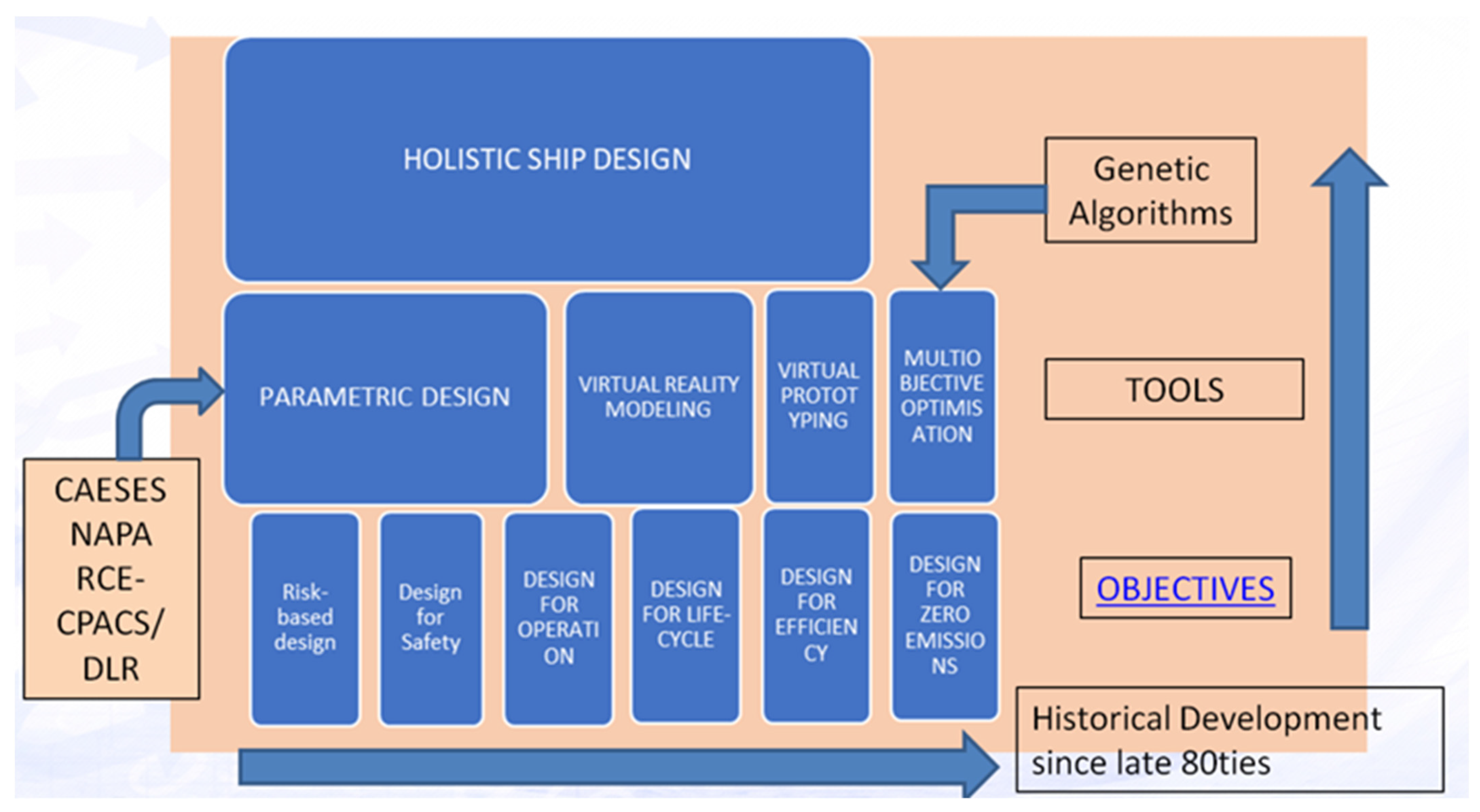
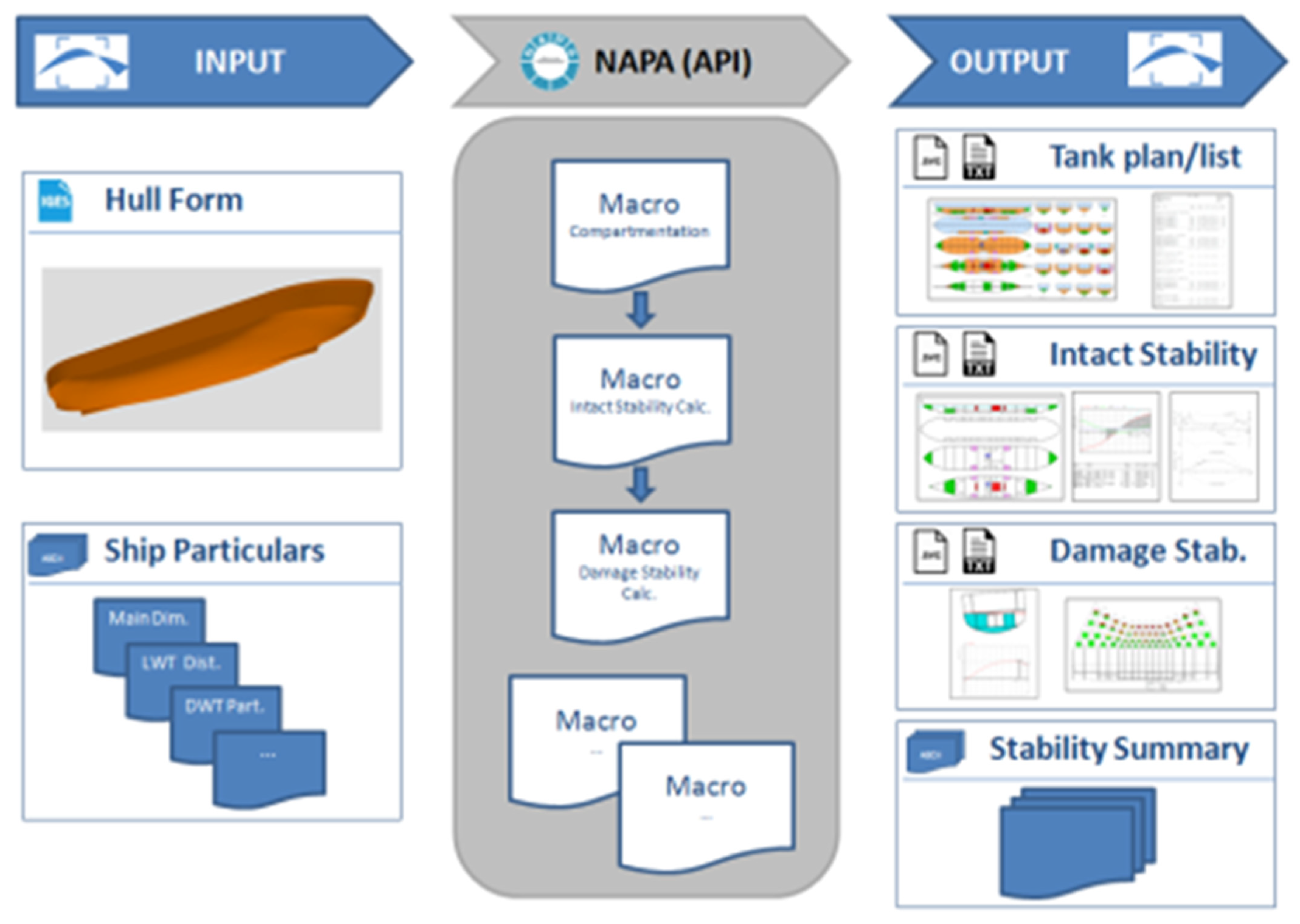
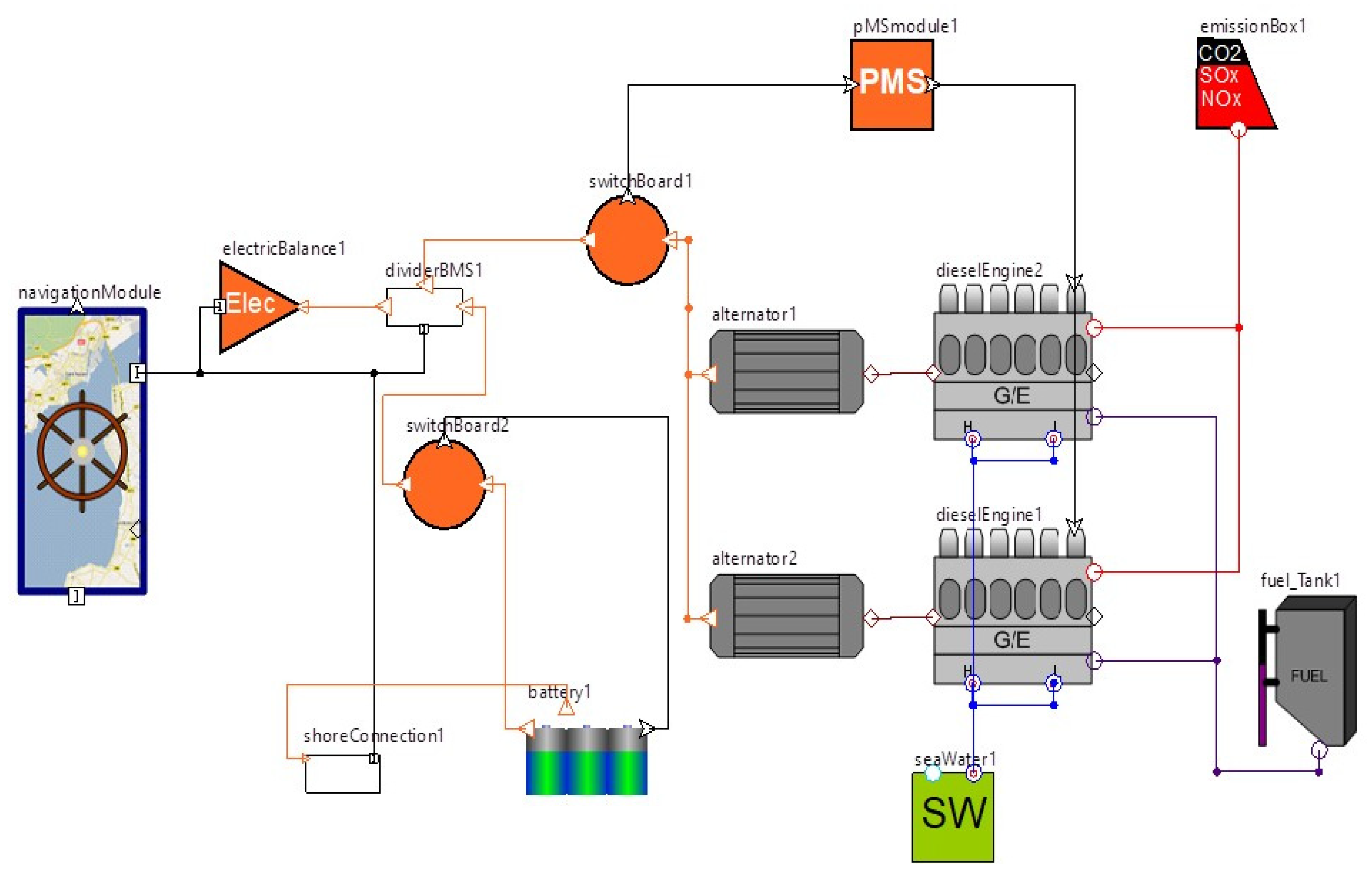
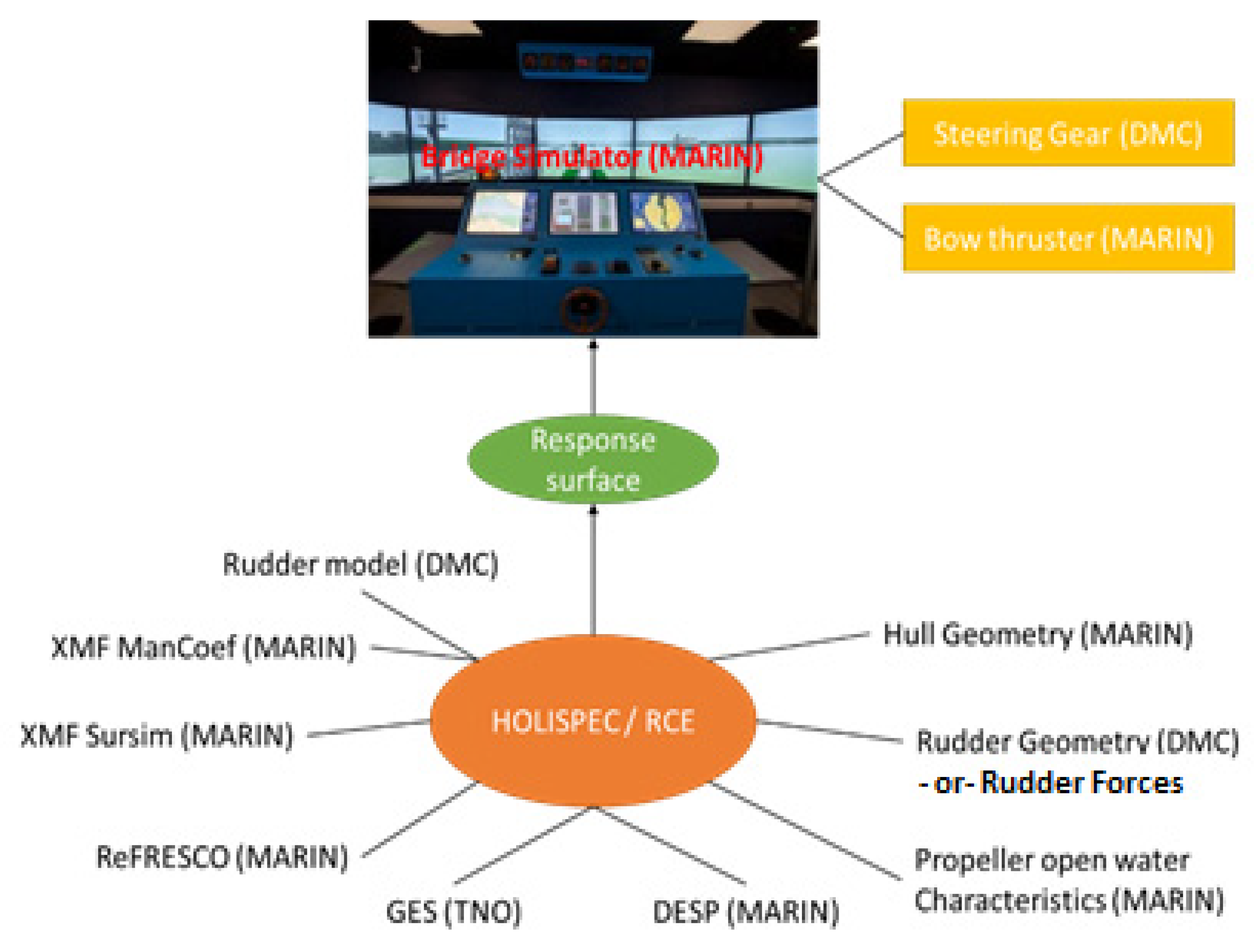
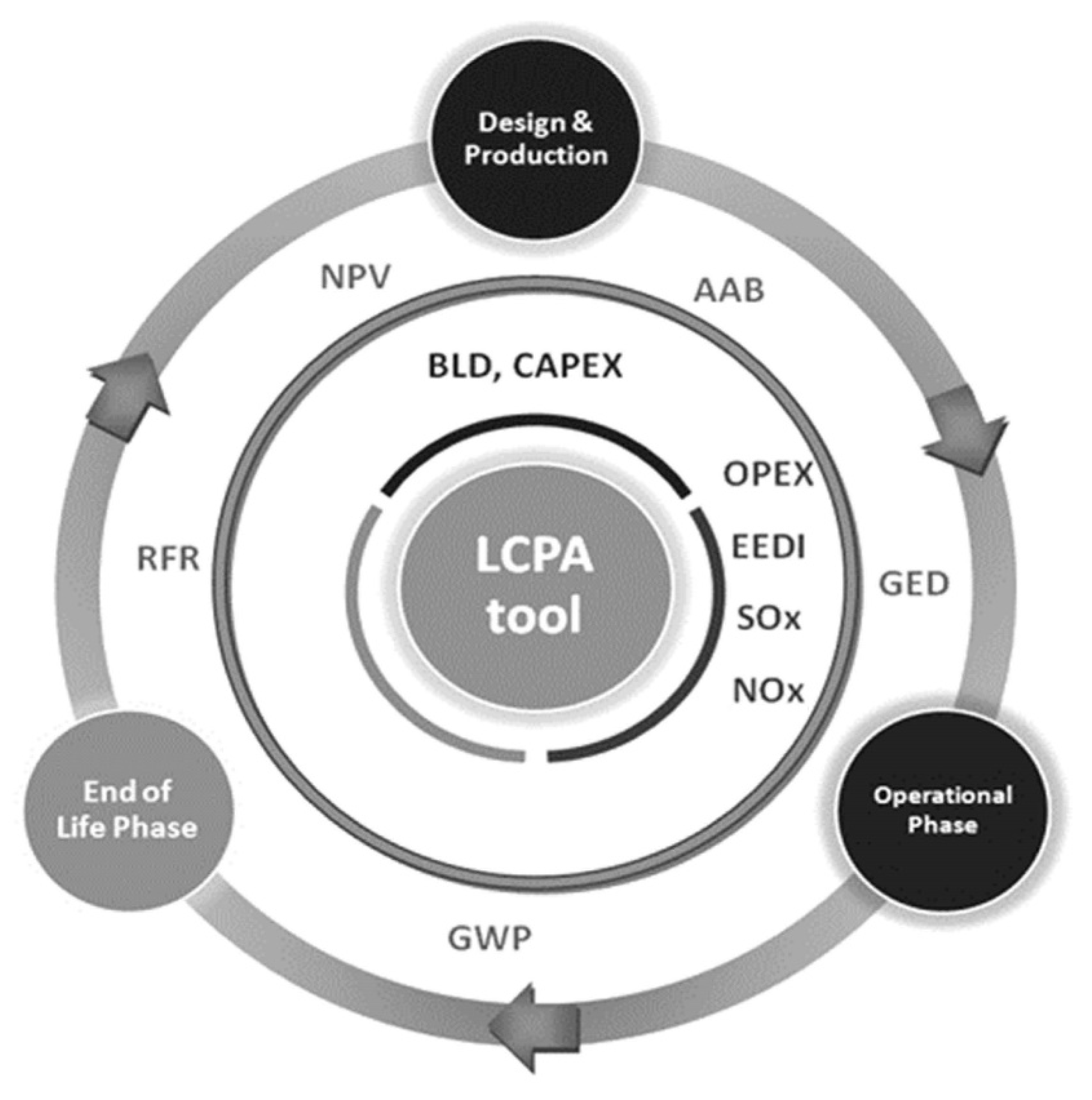
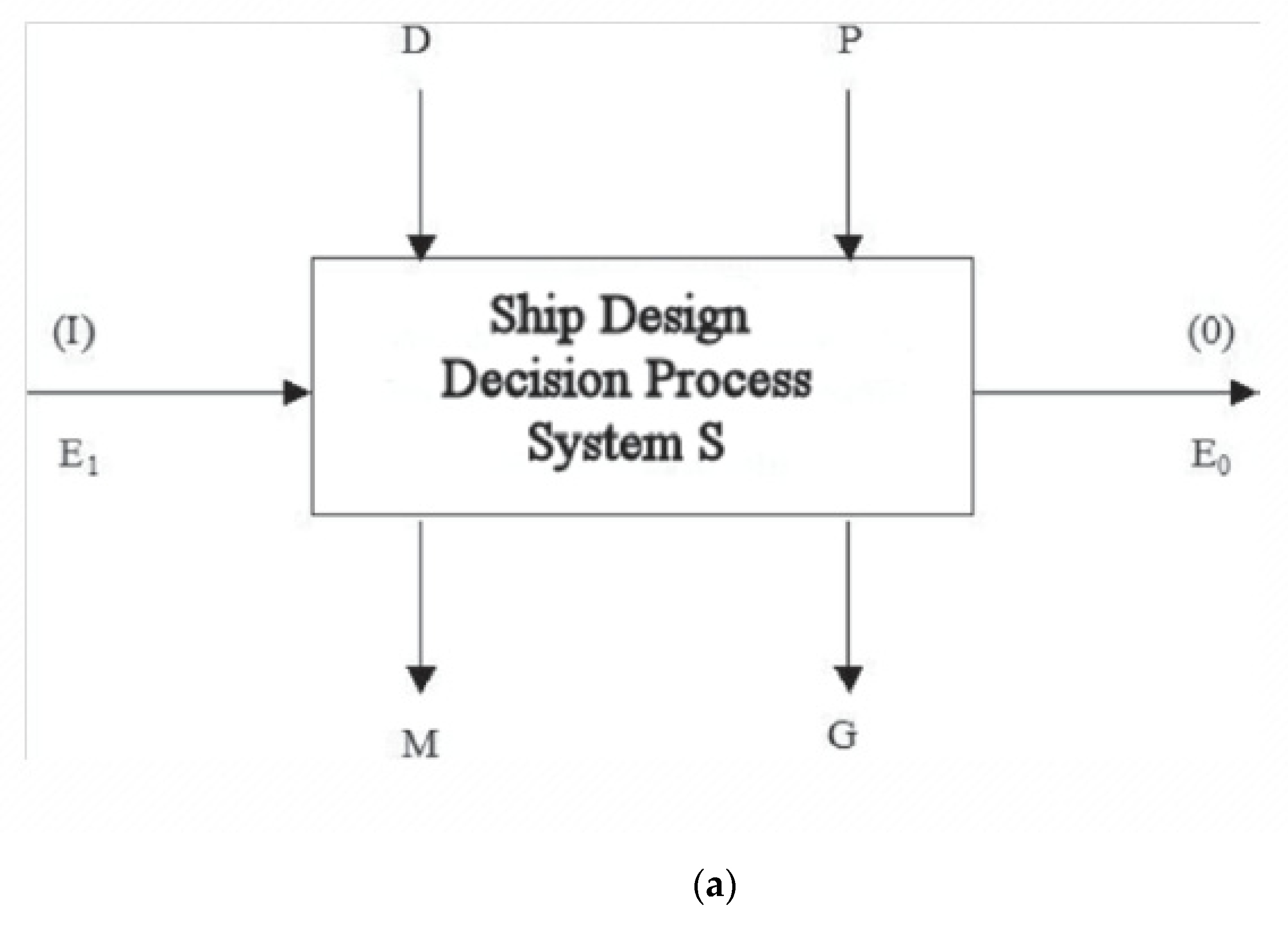
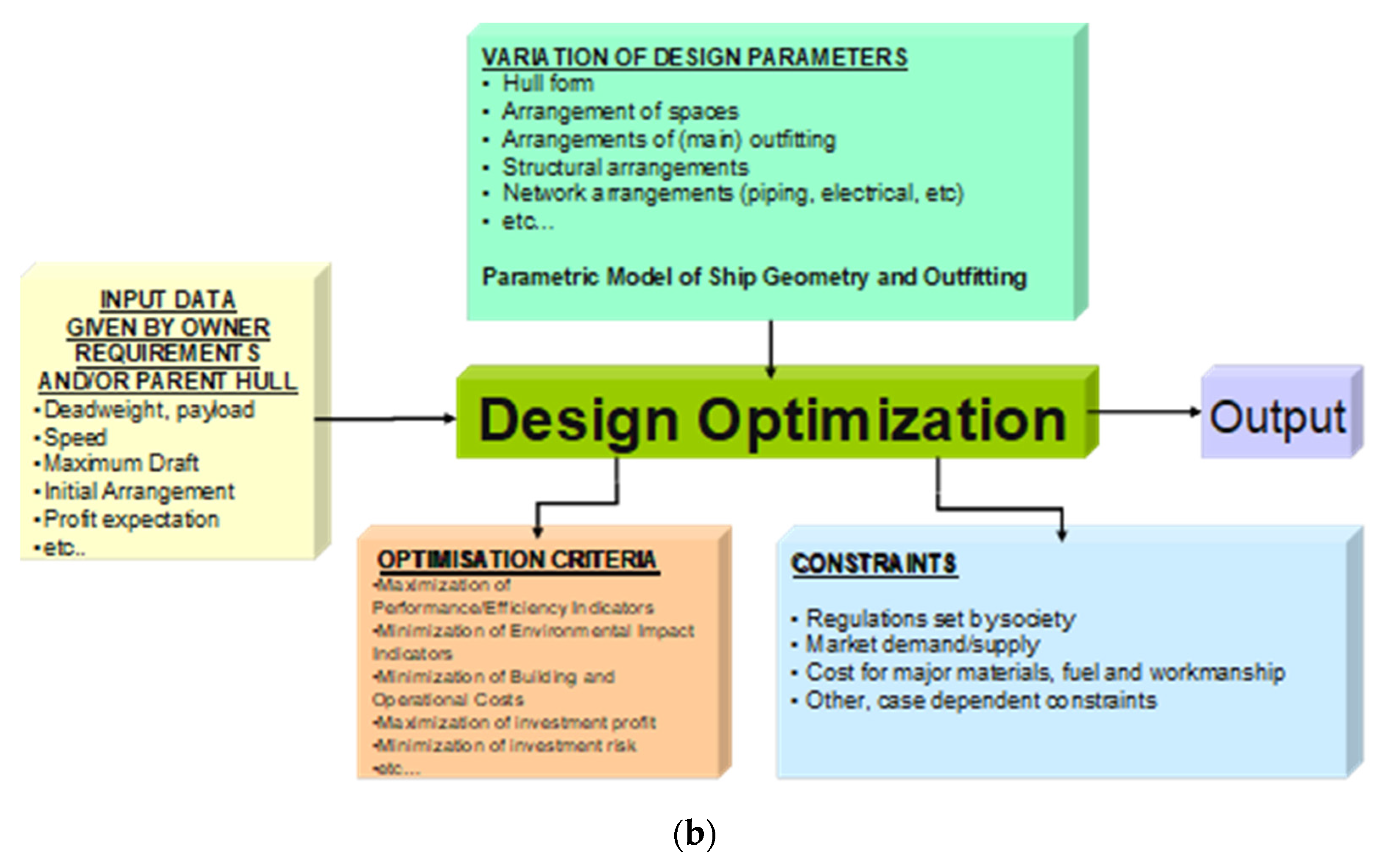

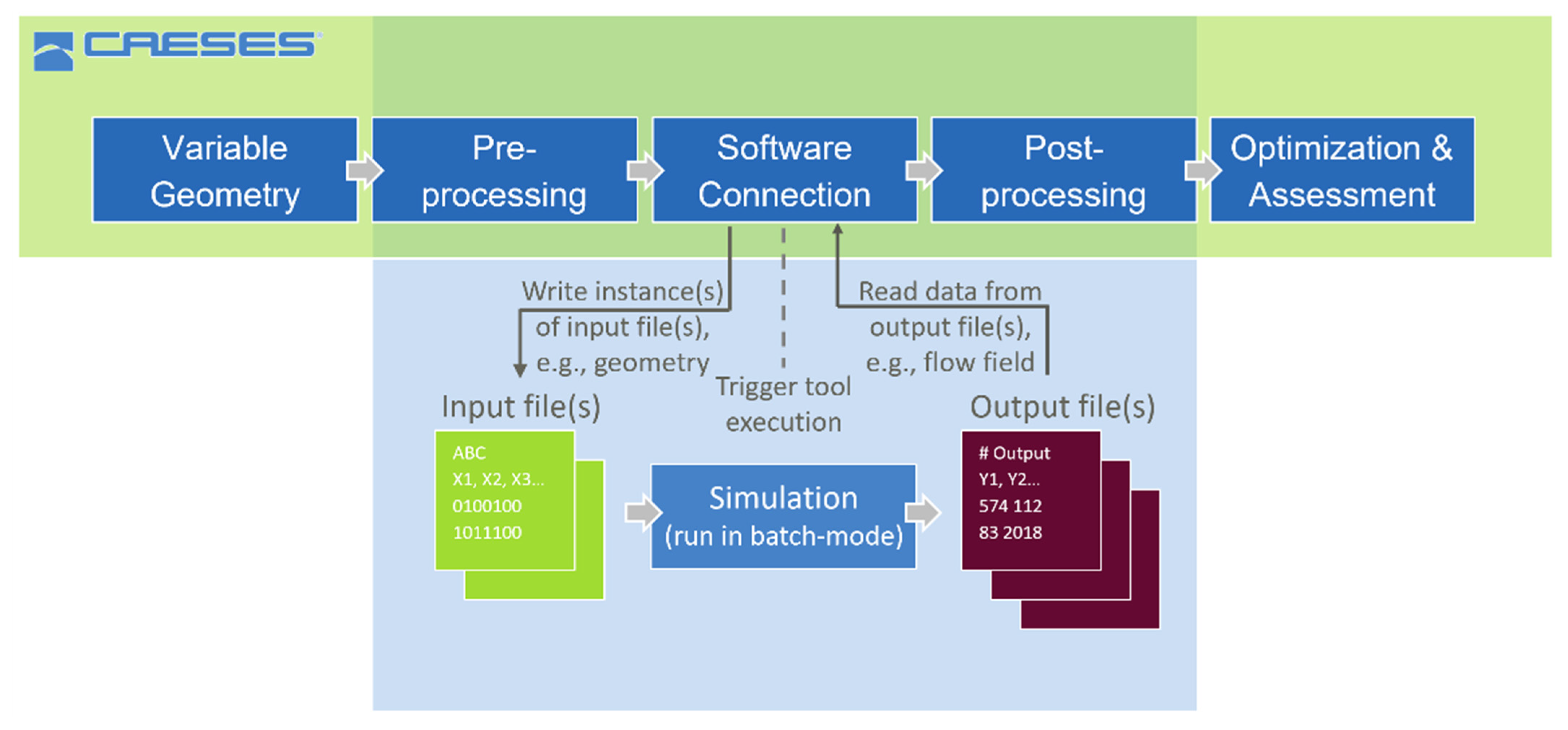

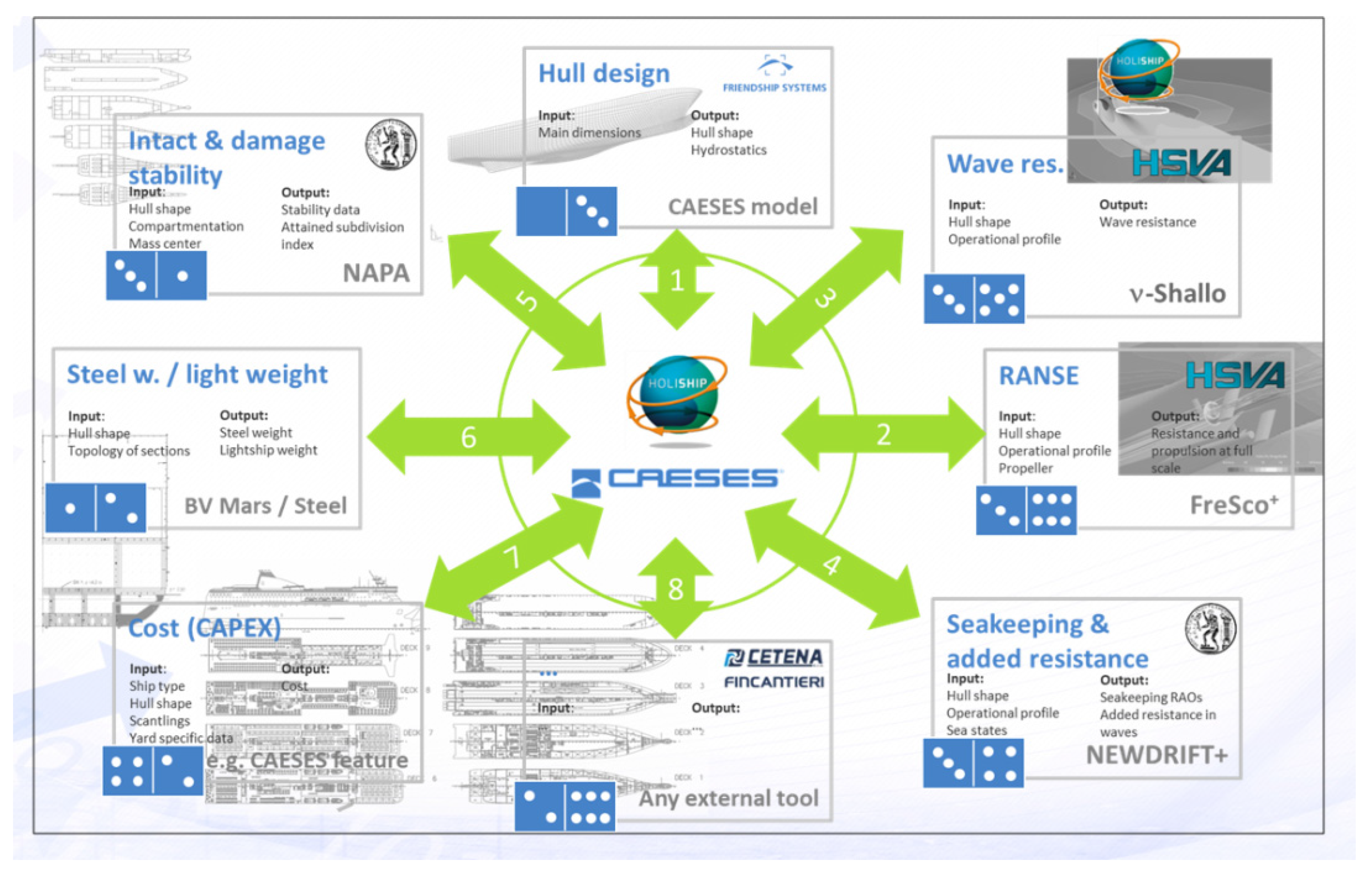

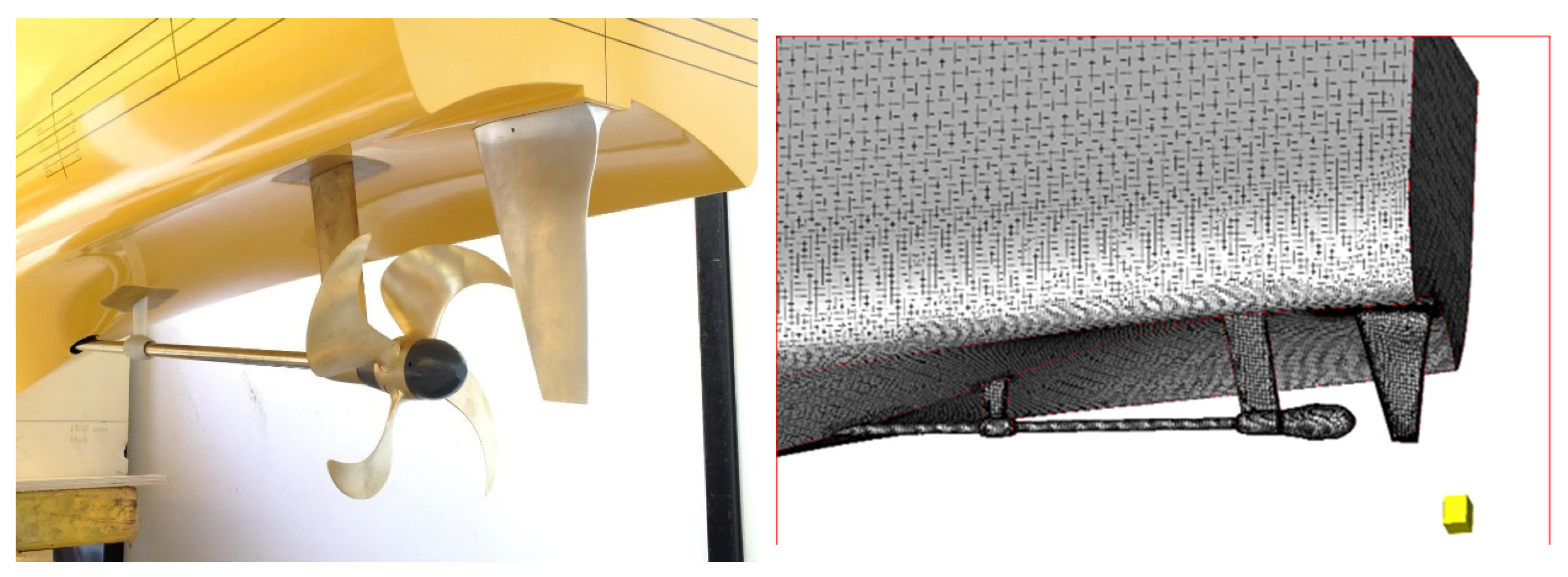
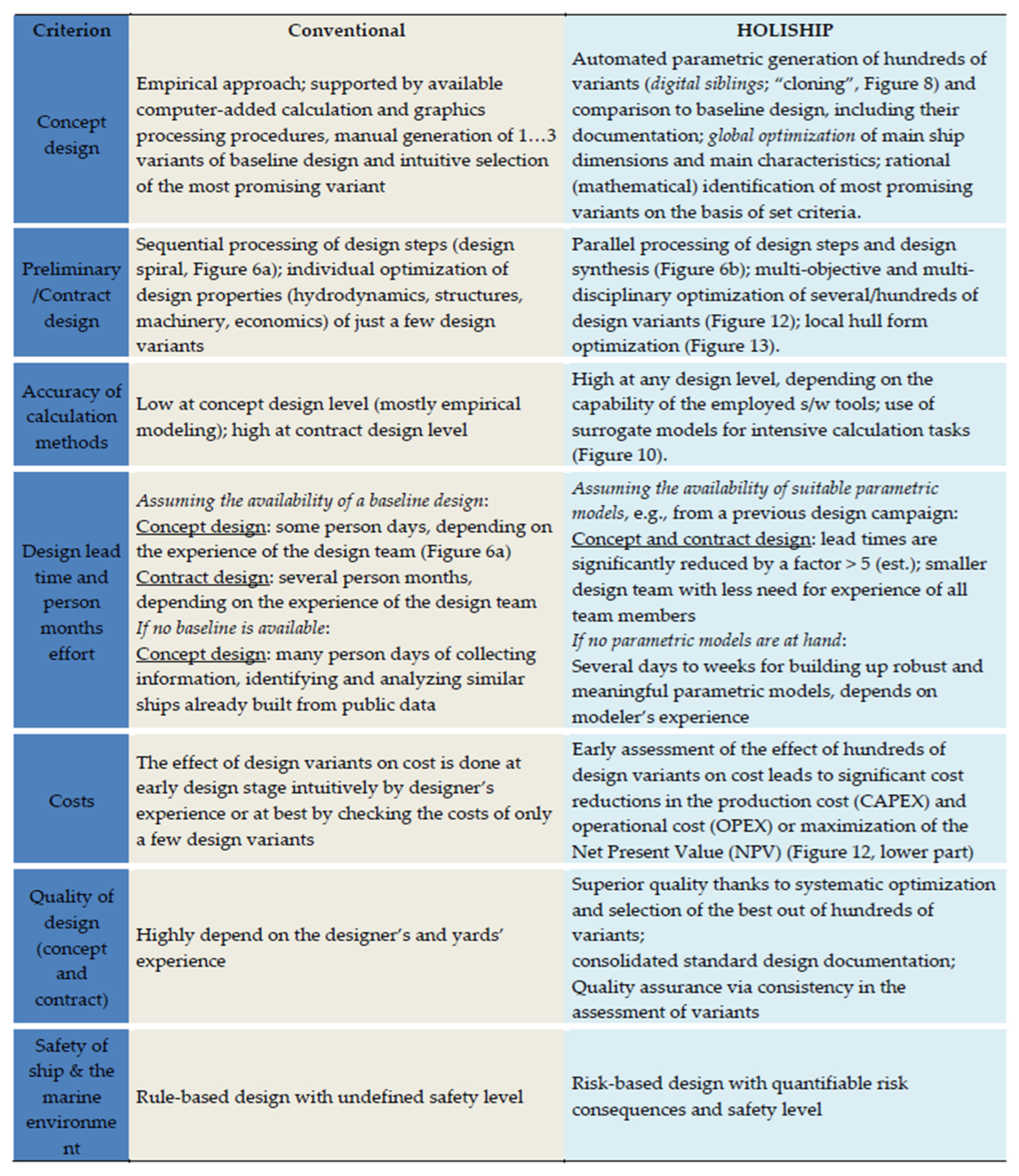
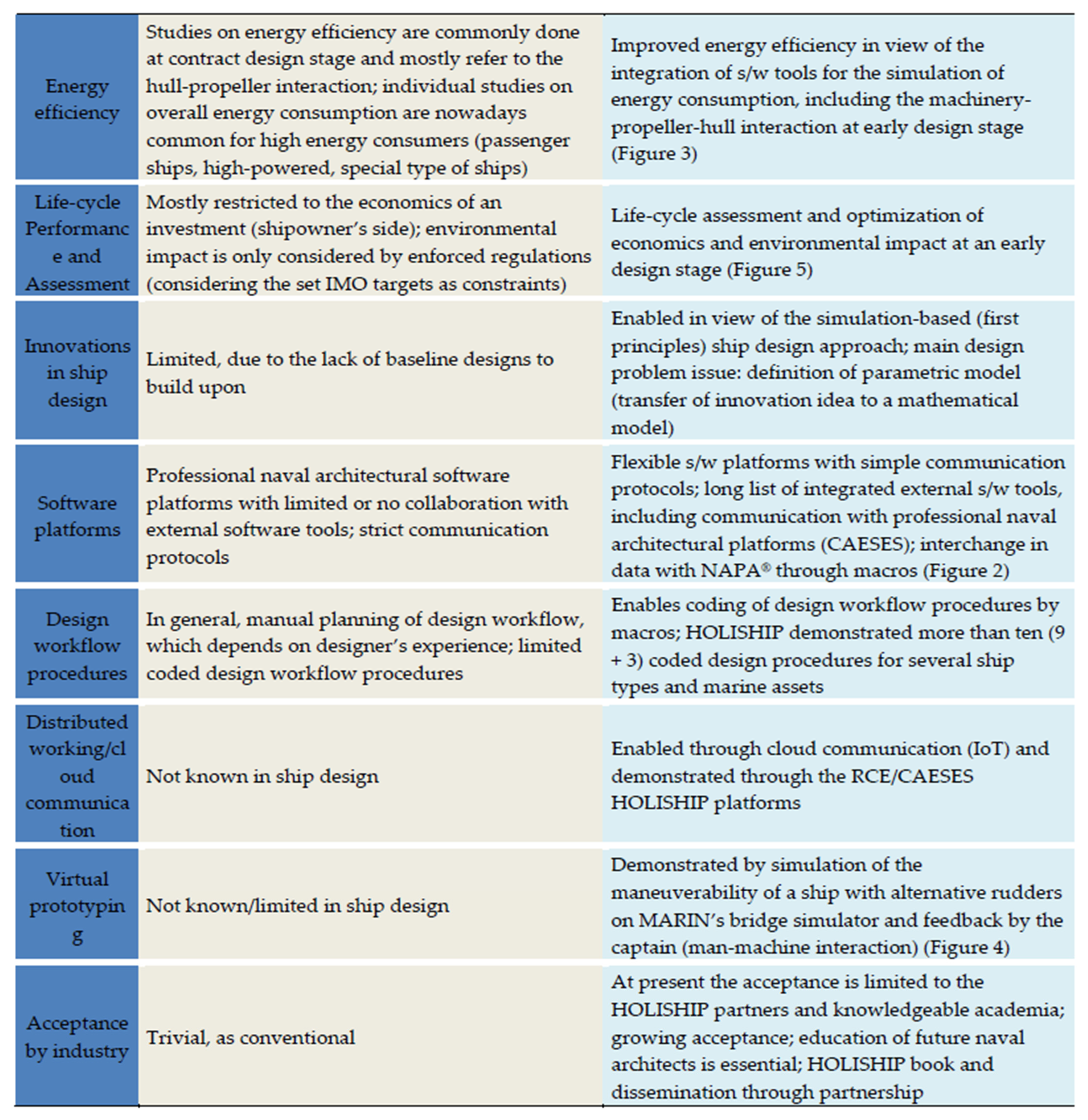
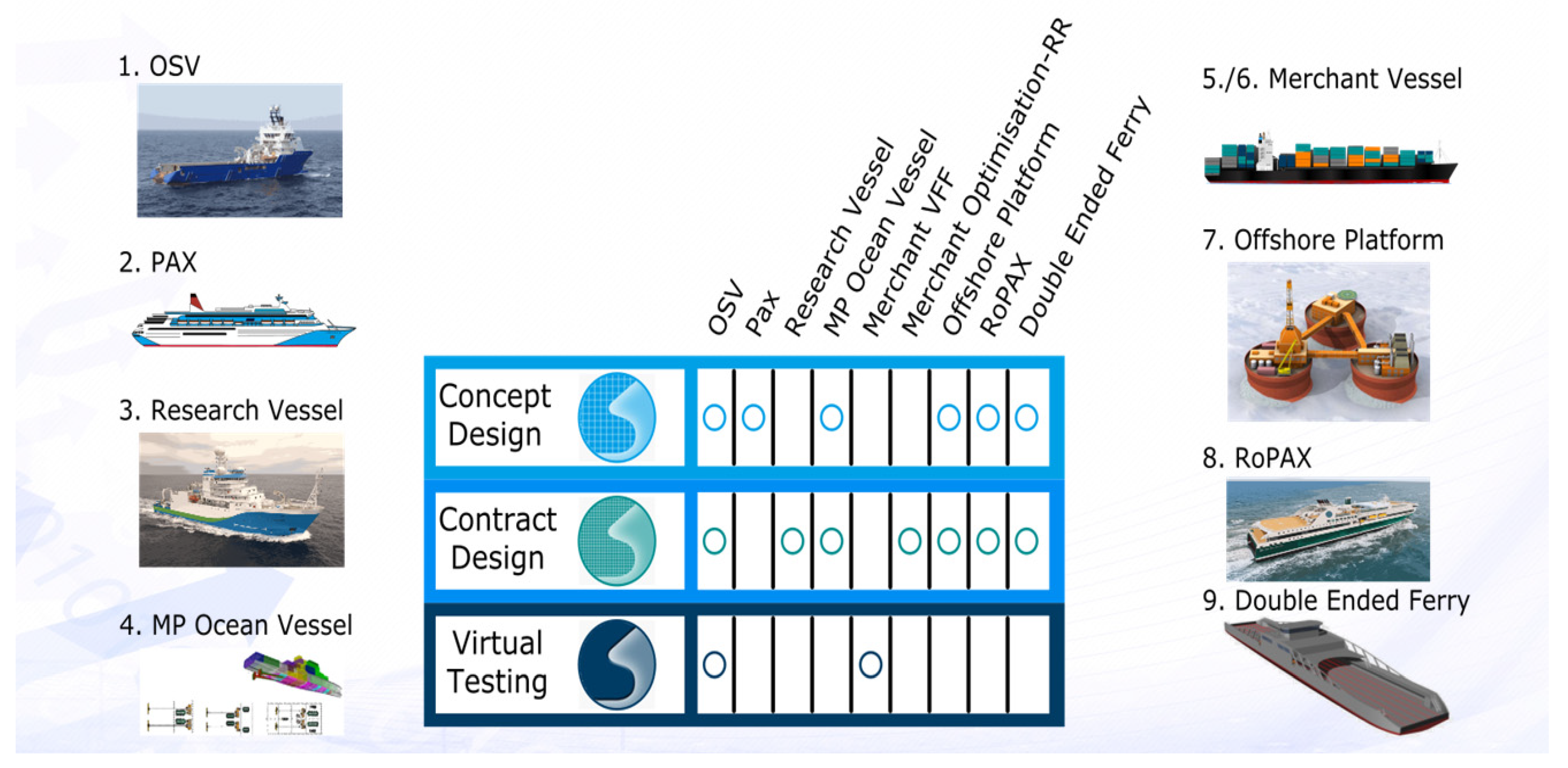
Publisher’s Note: MDPI stays neutral with regard to jurisdictional claims in published maps and institutional affiliations. |
© 2022 by the author. Licensee MDPI, Basel, Switzerland. This article is an open access article distributed under the terms and conditions of the Creative Commons Attribution (CC BY) license (https://creativecommons.org/licenses/by/4.0/).
Share and Cite
Papanikolaou, A.D. Holistic Approach to Ship Design. J. Mar. Sci. Eng. 2022, 10, 1717. https://doi.org/10.3390/jmse10111717
Papanikolaou AD. Holistic Approach to Ship Design. Journal of Marine Science and Engineering. 2022; 10(11):1717. https://doi.org/10.3390/jmse10111717
Chicago/Turabian StylePapanikolaou, Apostolos D. 2022. "Holistic Approach to Ship Design" Journal of Marine Science and Engineering 10, no. 11: 1717. https://doi.org/10.3390/jmse10111717
APA StylePapanikolaou, A. D. (2022). Holistic Approach to Ship Design. Journal of Marine Science and Engineering, 10(11), 1717. https://doi.org/10.3390/jmse10111717





